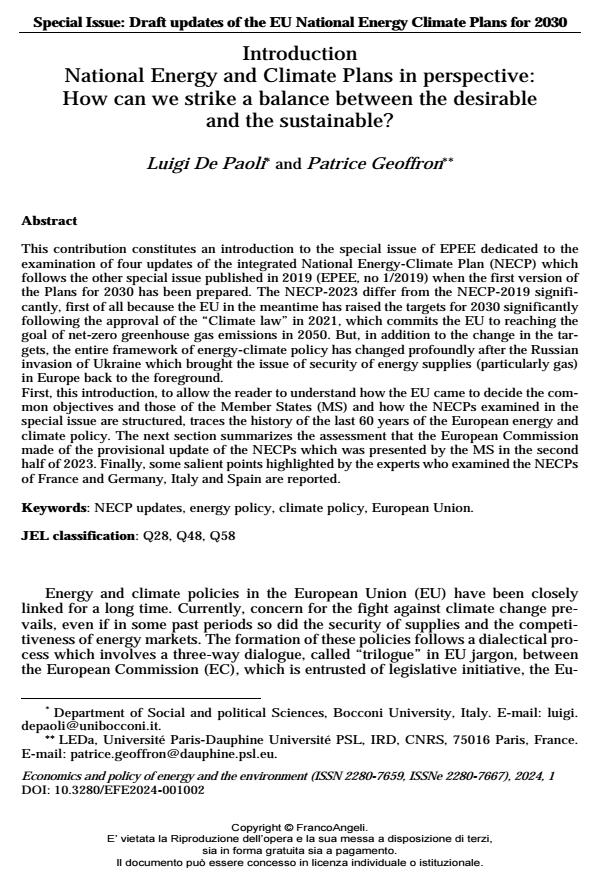Introduction National Energy and Climate Plans in perspective: How can we strike a balance between the desirable and the sustainable?
Journal title ECONOMICS AND POLICY OF ENERGY AND THE ENVIRONMENT
Author/s Luigi De Paoli, Patrice Geoffron
Publishing Year 2024 Issue 2024/1
Language English Pages 18 P. 15-32 File size 177 KB
DOI 10.3280/EFE2024-001002
DOI is like a bar code for intellectual property: to have more infomation
click here
Below, you can see the article first page
If you want to buy this article in PDF format, you can do it, following the instructions to buy download credits

FrancoAngeli is member of Publishers International Linking Association, Inc (PILA), a not-for-profit association which run the CrossRef service enabling links to and from online scholarly content.
This contribution constitutes an introduction to the special issue of EPEE dedicated to the examination of four updates of the integrated National Energy-Climate Plan (NECP) which follows the other special issue published in 2019 (EPEE, no 1/2019) when the first version of the Plans for 2030 has been prepared. The NECP-2023 differ from the NECP-2019 signifi- cantly, first of all because the EU in the meantime has raised the targets for 2030 significantly following the approval of the “Climate law” in 2021, which commits the EU to reaching the goal of net-zero greenhouse gas emissions in 2050. But, in addition to the change in the tar- gets, the entire framework of energy-climate policy has changed profoundly after the Russian invasion of Ukraine which brought the issue of security of energy supplies (particularly gas) in Europe back to the foreground. First, this introduction, to allow the reader to understand how the EU came to decide the com- mon objectives and those of the Member States (MS) and how the NECPs examined in the special issue are structured, traces the history of the last 60 years of the European energy and climate policy. The next section summarizes the assessment that the European Commission made of the provisional update of the NECPs which was presented by the MS in the second half of 2023. Finally, some salient points highlighted by the experts who examined the NECPs of France and Germany, Italy and Spain are reported.
Keywords: NECP updates, energy policy, climate policy, European Union
Jel codes: Q28, Q48, Q58
Luigi De Paoli, Patrice Geoffron, Introduction National Energy and Climate Plans in perspective: How can we strike a balance between the desirable and the sustainable? in "ECONOMICS AND POLICY OF ENERGY AND THE ENVIRONMENT" 1/2024, pp 15-32, DOI: 10.3280/EFE2024-001002